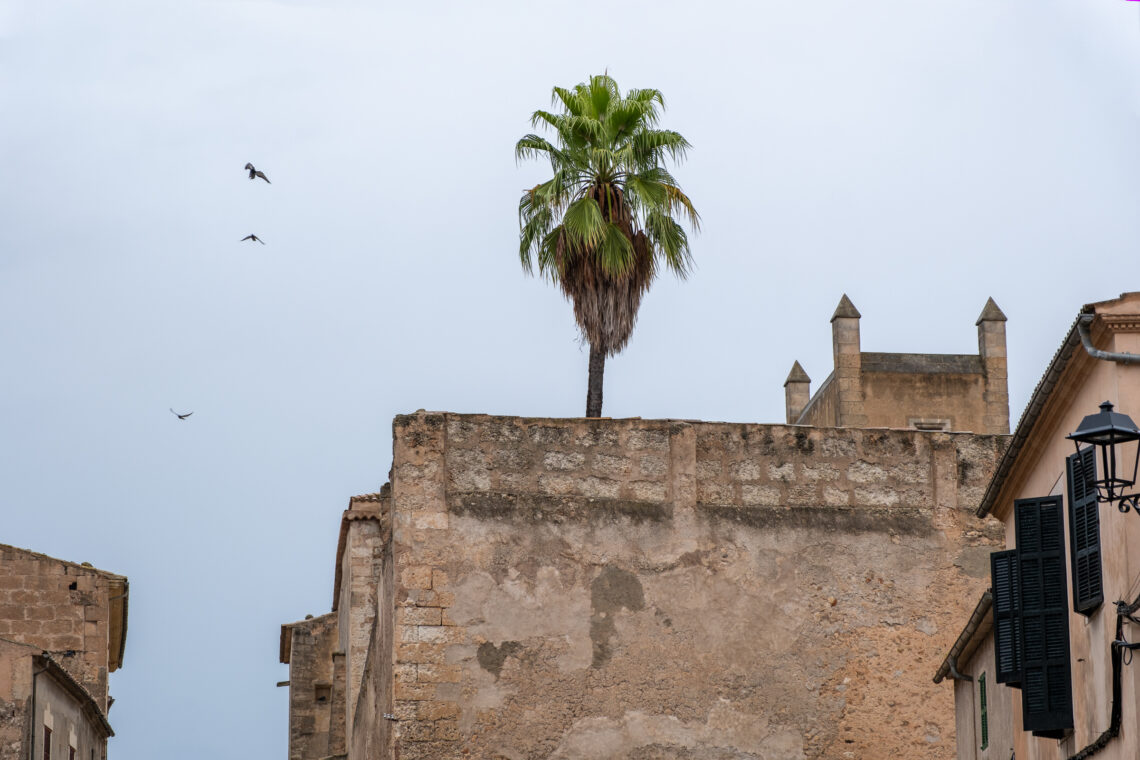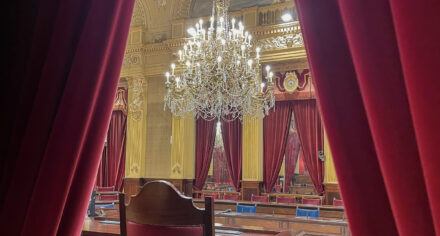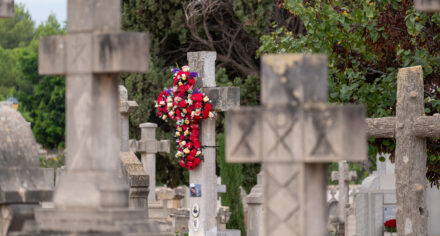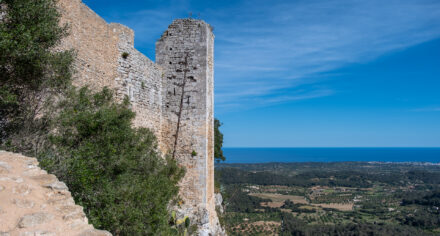Visiting the Almudaina Palace in Palma with its grandeur, you wouldn’t expect that this wasn’t a solitaire on the island. But what if we told you that the kings of Mallorca also ruled from a much quieter, lesser-known palace, one hidden away in the island’s very heart? Welcome to Palau de Sineu, once a royal residence of strategic significance, long before its transformation into a cloistered convent.
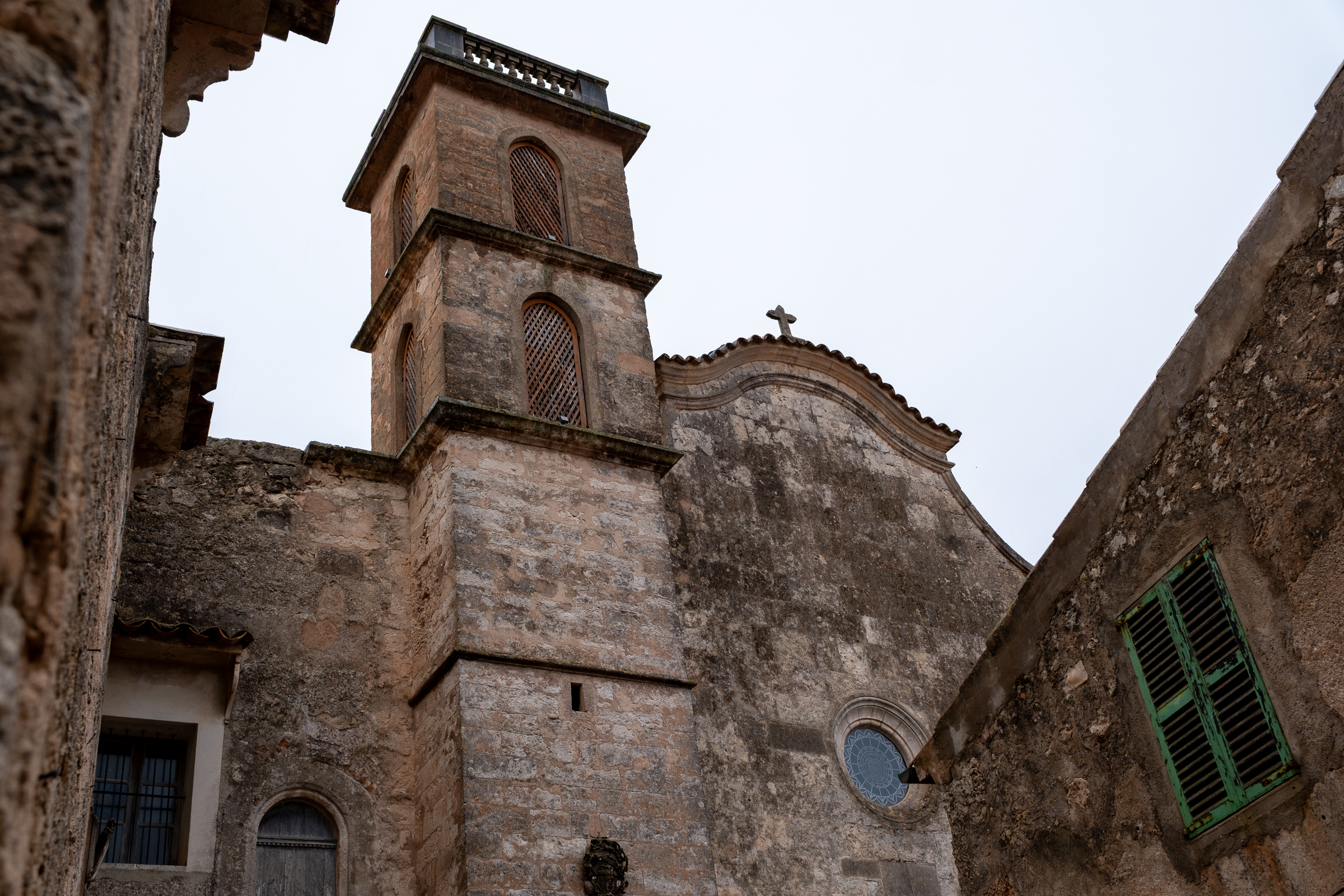
The Rural Mallorca
Located in a town nearly equidistant from all corners of the island, this palace was more than a refuge. It was a statement of power, perfectly placed to exert control and maintain influence over rural Mallorca. Today, it still stands, not just as a monument of stone and silence, but as a vivid storyteller of the island’s layered history, from medieval monarchs to cloistered nuns.
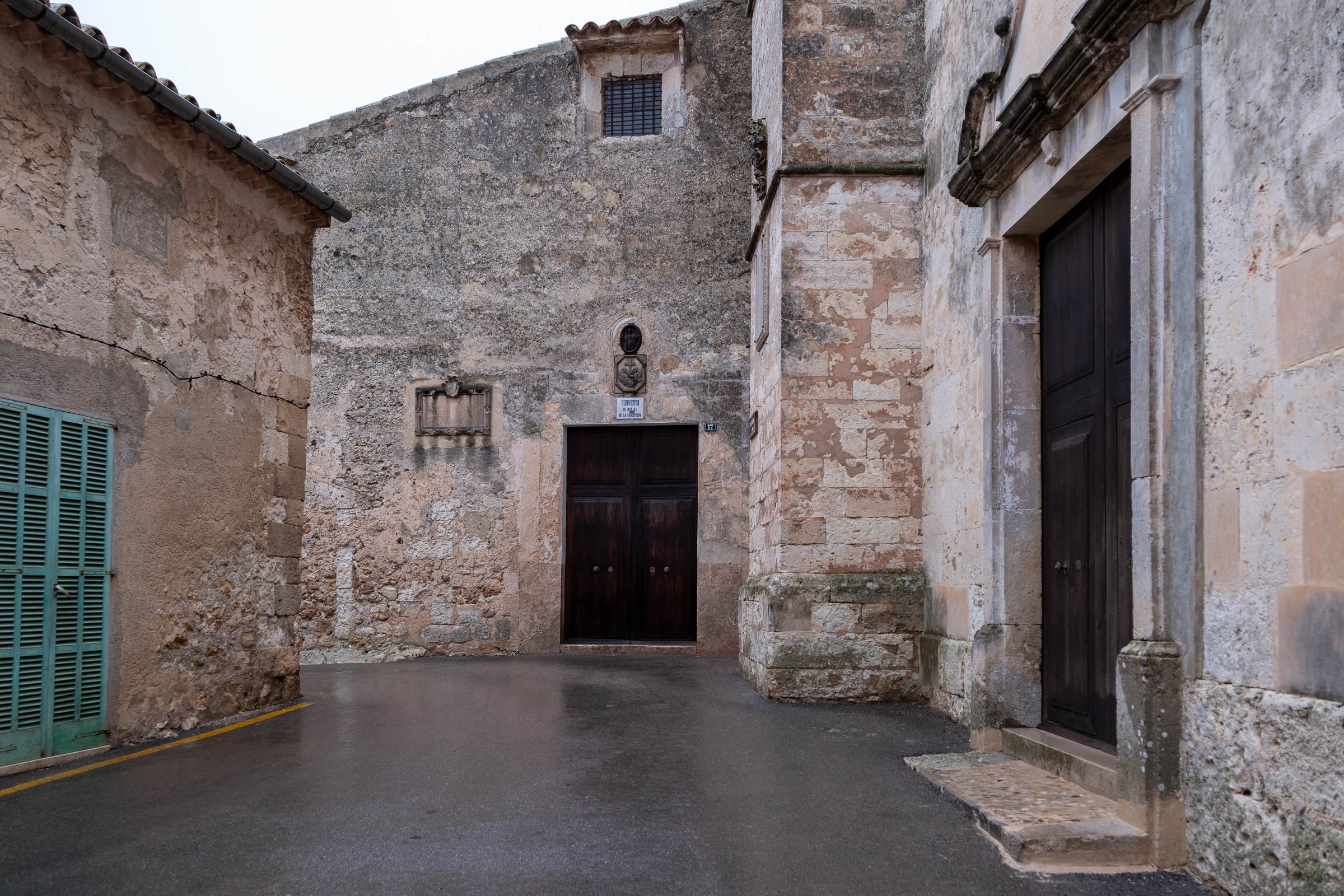
Secrets Behind Mighty Doors
On a rainy morning, the Palau de Sineu feels out of time. Its thick, ancient walls soak up the sound of raindrops while the streets of the medieval town still feel muted. And you wonder, do the people rushing by know the secrets behind the convent’s mighty wooden door?
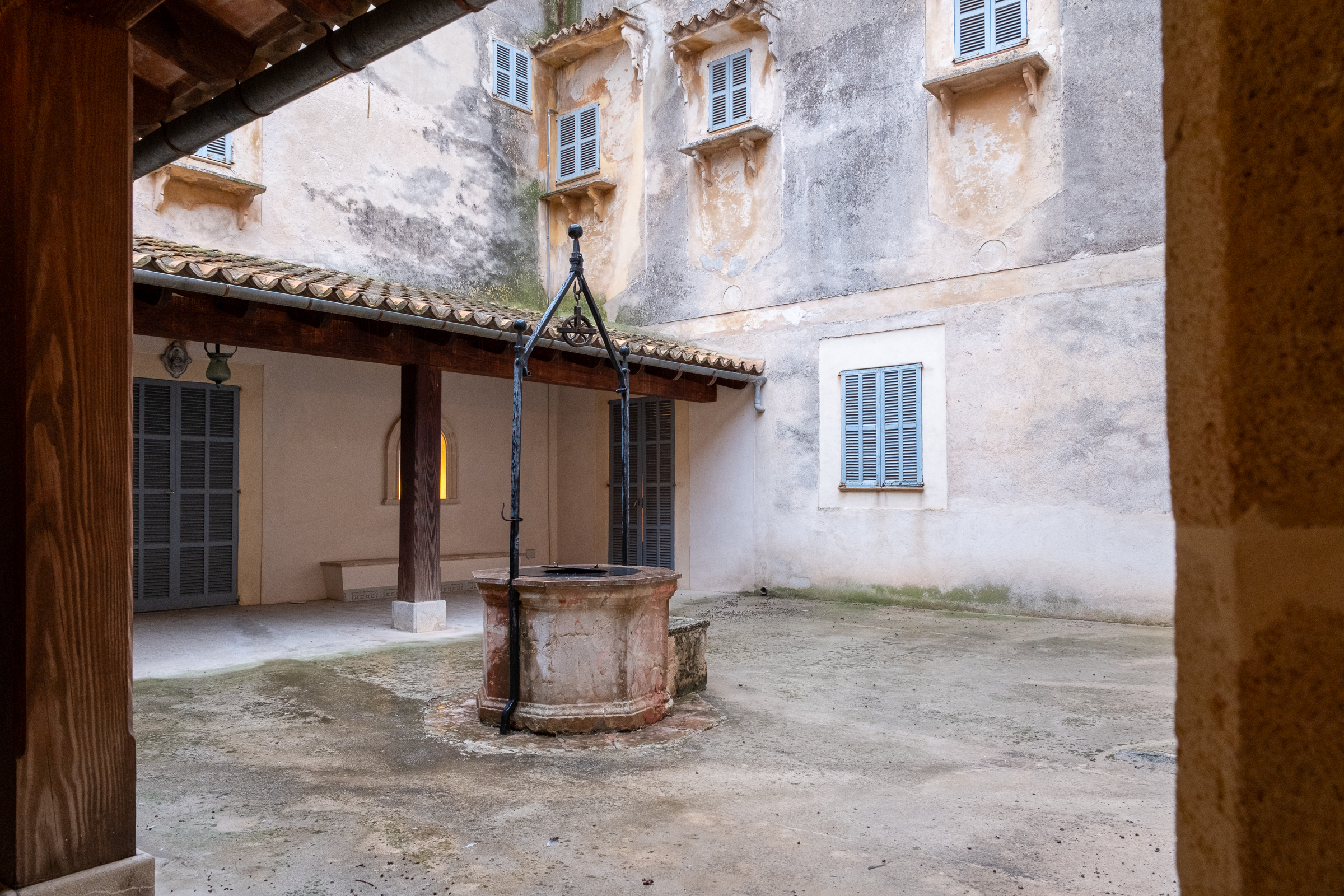
Step inside, and your senses must adjust. The low light and the damp cold air of the interior wrap around you like a cloak. Slowly, details emerge. The worn stone floor, the restored beams, and the small patio with the walled fountain.
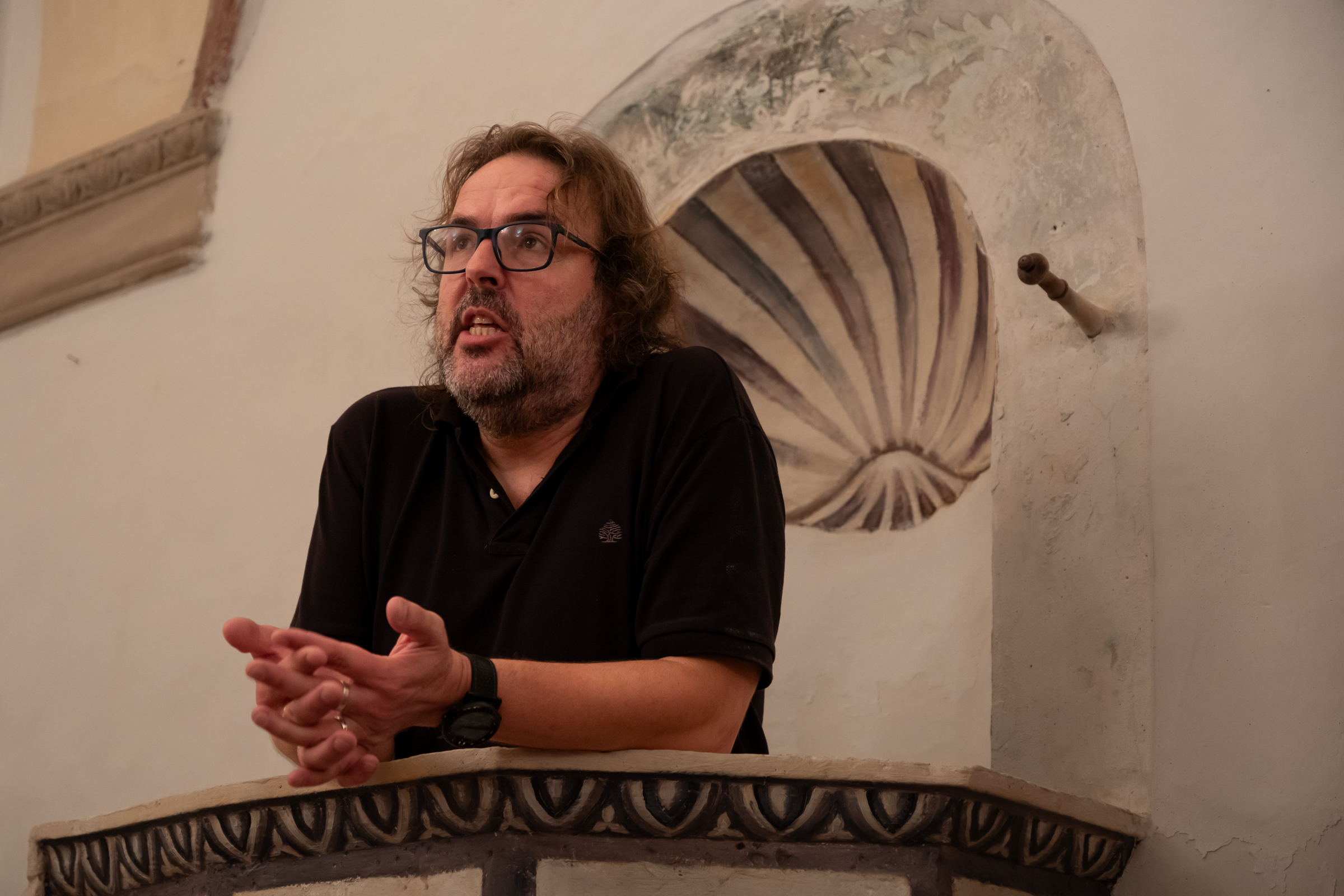
A Voice to the Stones
If the walls could talk, they might sound a lot like Tomàs Vibot, the guide and historian who brings this hidden palace to life. His tours are not dry recitations of dates and dynasties. Instead, he tells stories. How Mallorca’s kings traveled from palace to palace not out of leisure, but necessity, as a way to maintain power, gather information, and enforce control over a dispersed island realm.
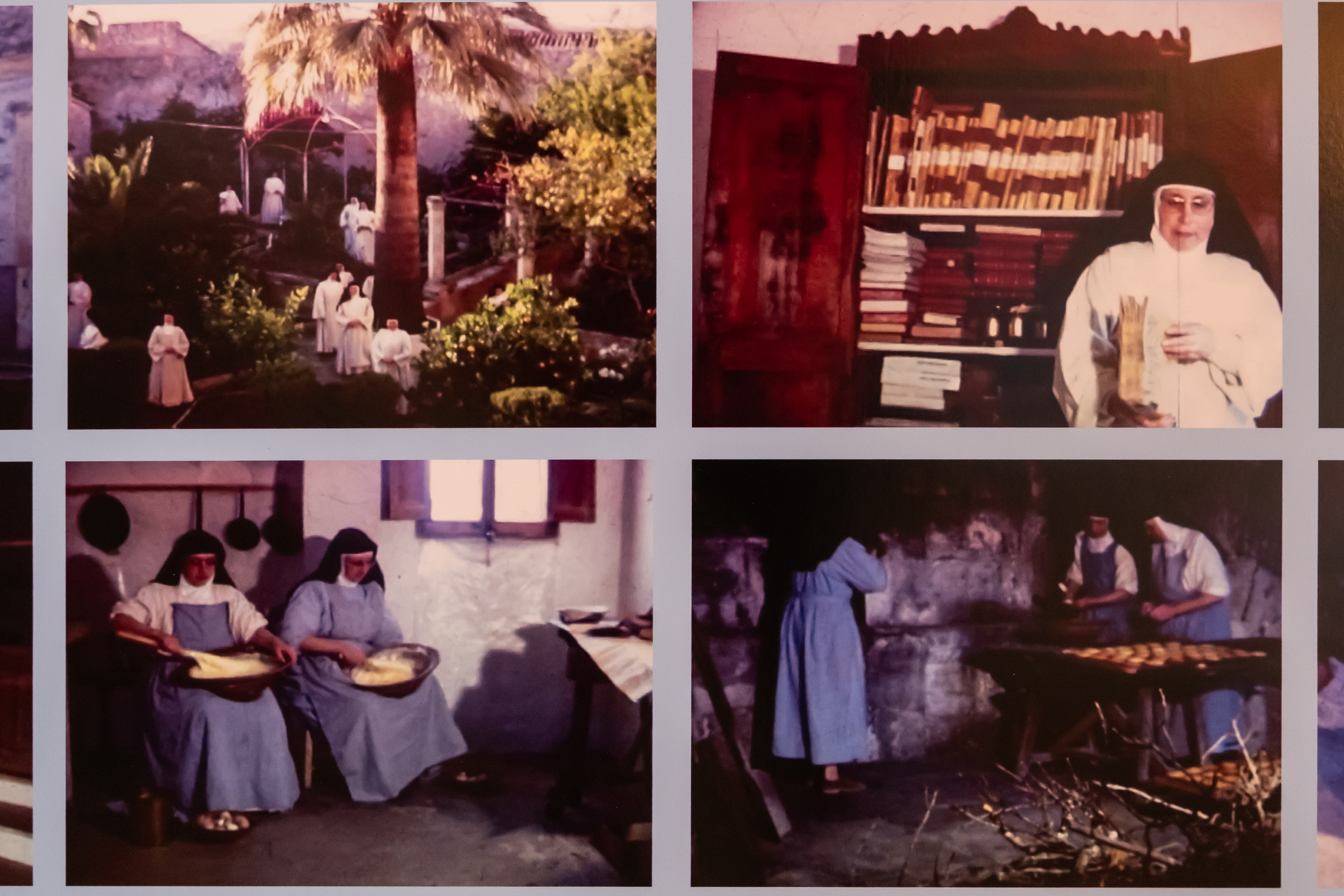
He explains how, in the 16th century, the palace was handed over to the Order of the Conceptionist Nuns. These women brought a different kind of discipline to the halls. Behind the convent walls, their spiritual lives were intertwined with work and austerity, maintaining the community, and even helping the people of Sineu in times of famine.
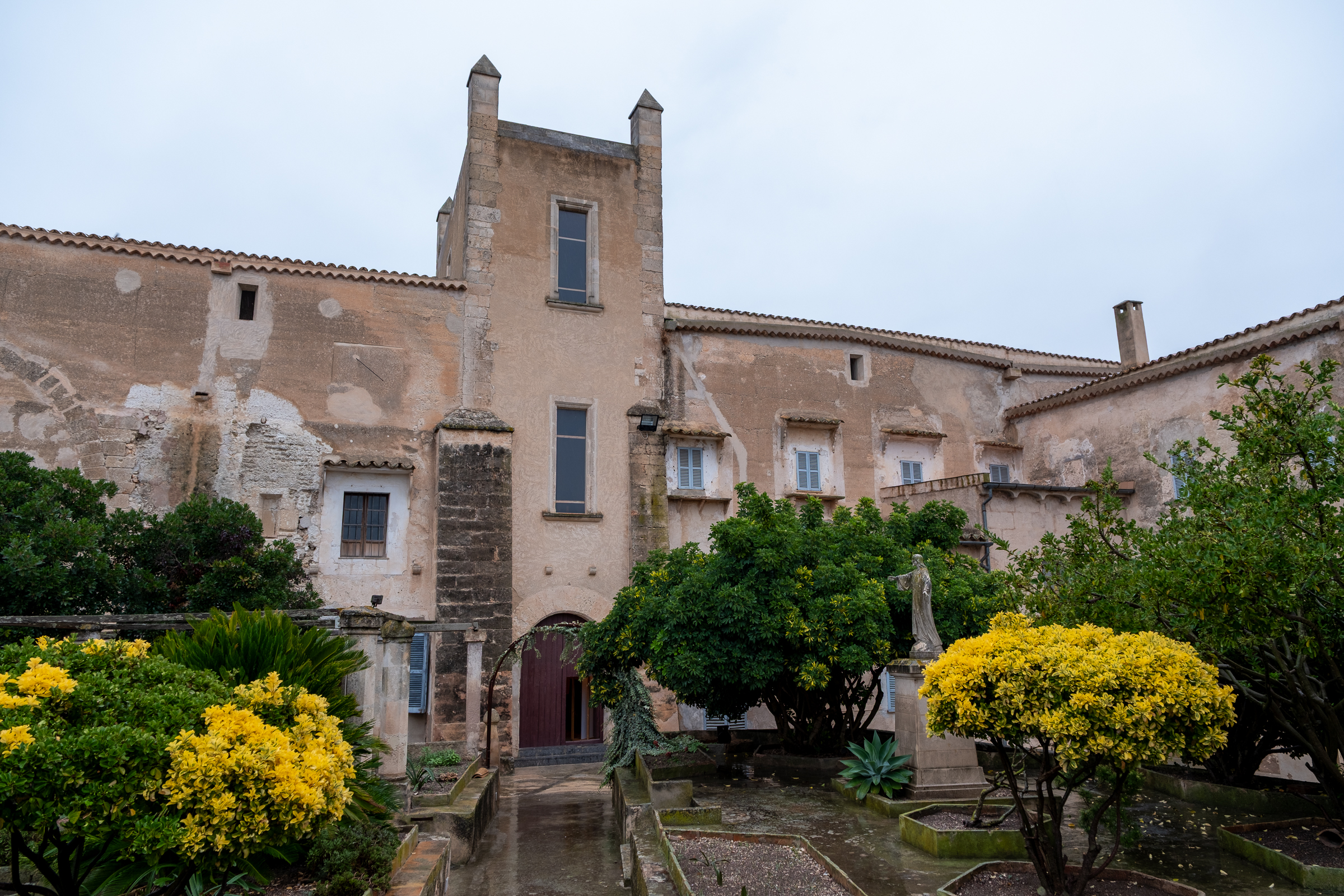
The community of nuns remained active for more than four hundred years. However, a decline in vocations made the convent’s continued operation unsustainable, resulting in its closure in 2016. According to the nuns’ will, it then became the property of the Bishopric of Mallorca.
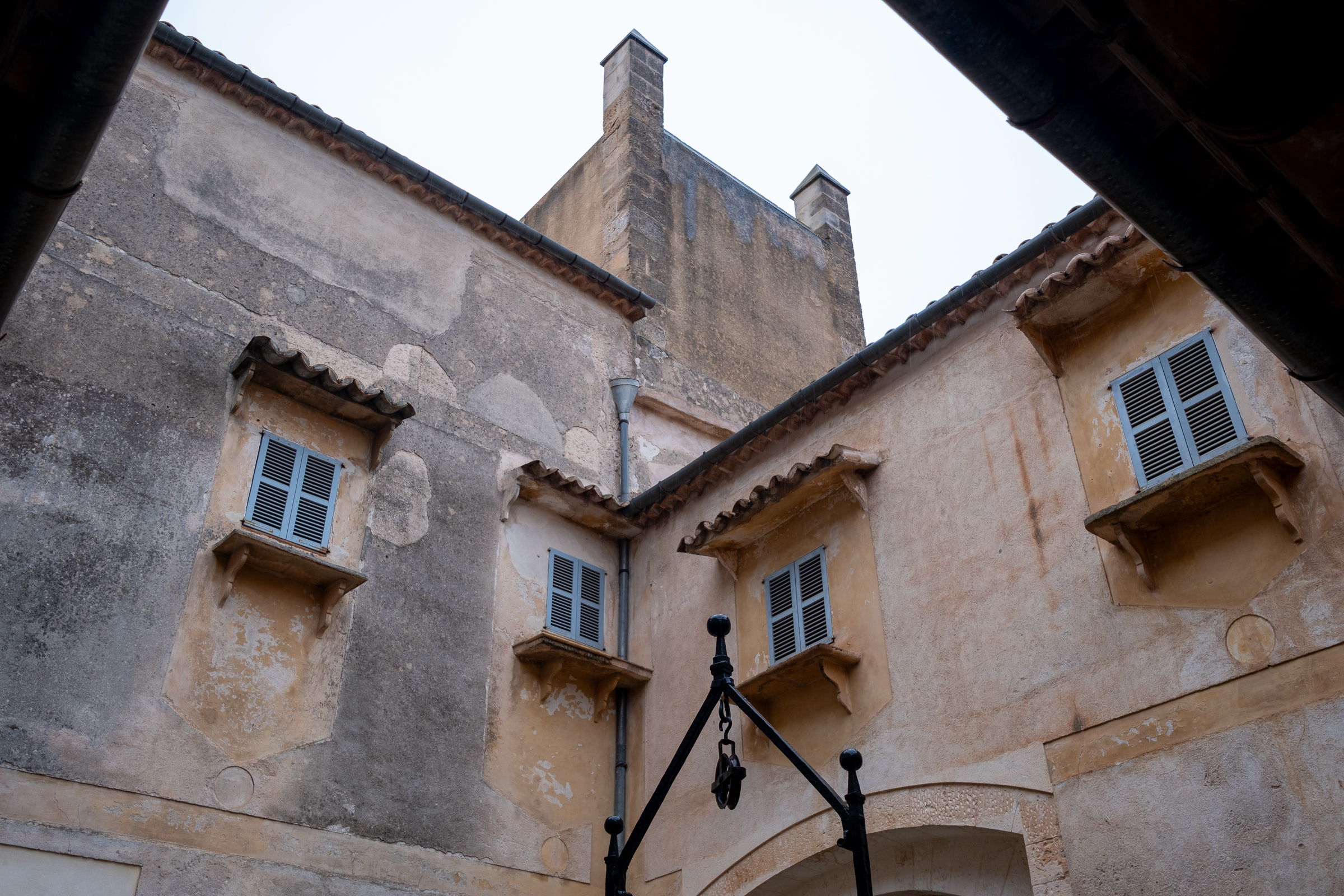
Traces of Time
Climb the tower of the Palau to reach a vantage point that once offered both defense and dominance. Here, history is not recorded in documents, but rather in historical graffiti. You can see the outlines of two boats with square sails and two figures, perhaps sailors. Why are there boats in the heart of the island? The meaning of the image is open to interpretation.
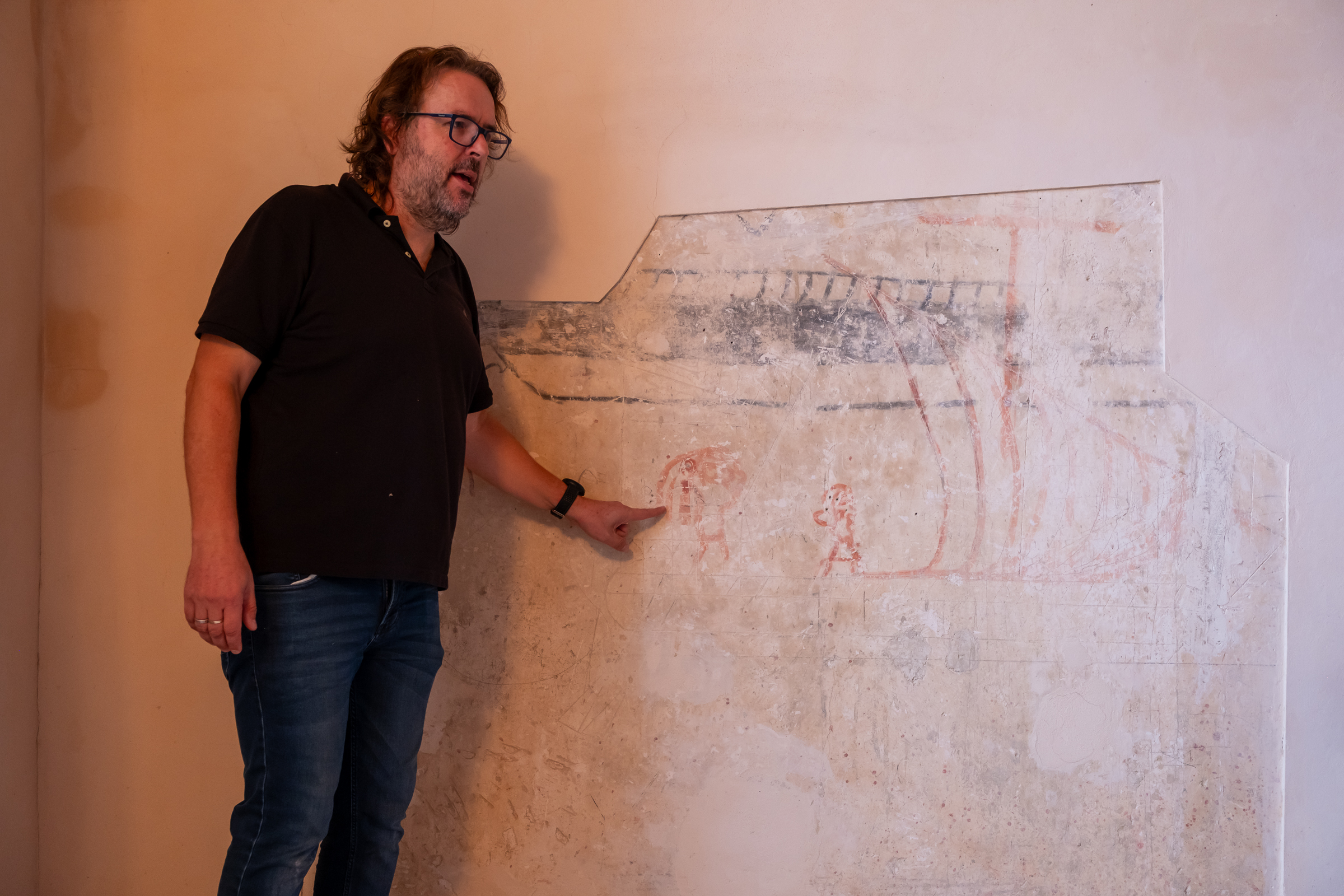
Garden of Reflection
Step back down into the garden, a peaceful place of reflection where the past still lingers in the shade of old trees and the scent of herbs.
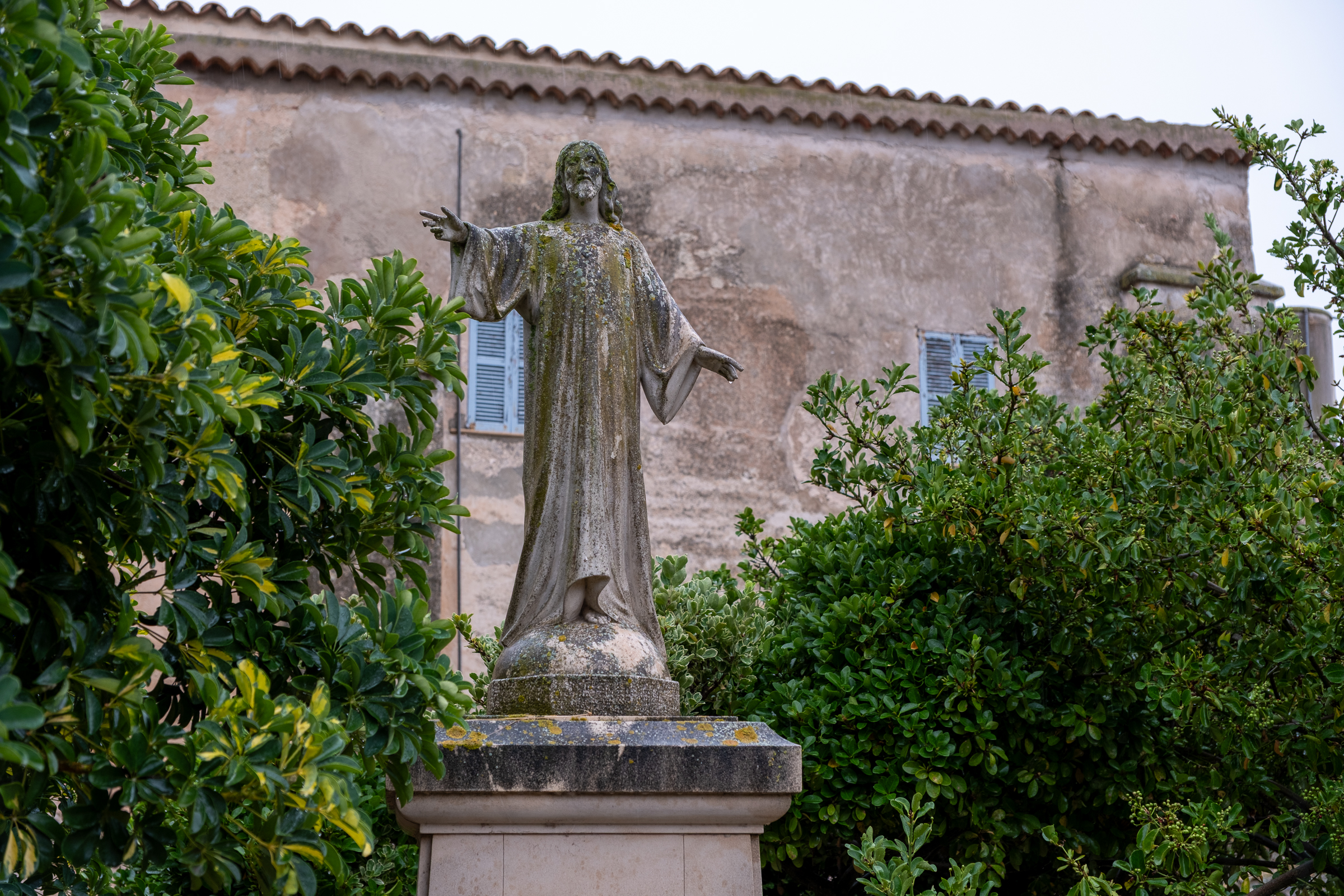
The Palau de Sineu is more than a building, it’s a rare, tangible timeline of Mallorca’s history, stitched into stone and soul. From royal residence to religious refuge, its story mirrors that of the island itself. Complex, layered, and worth exploring.
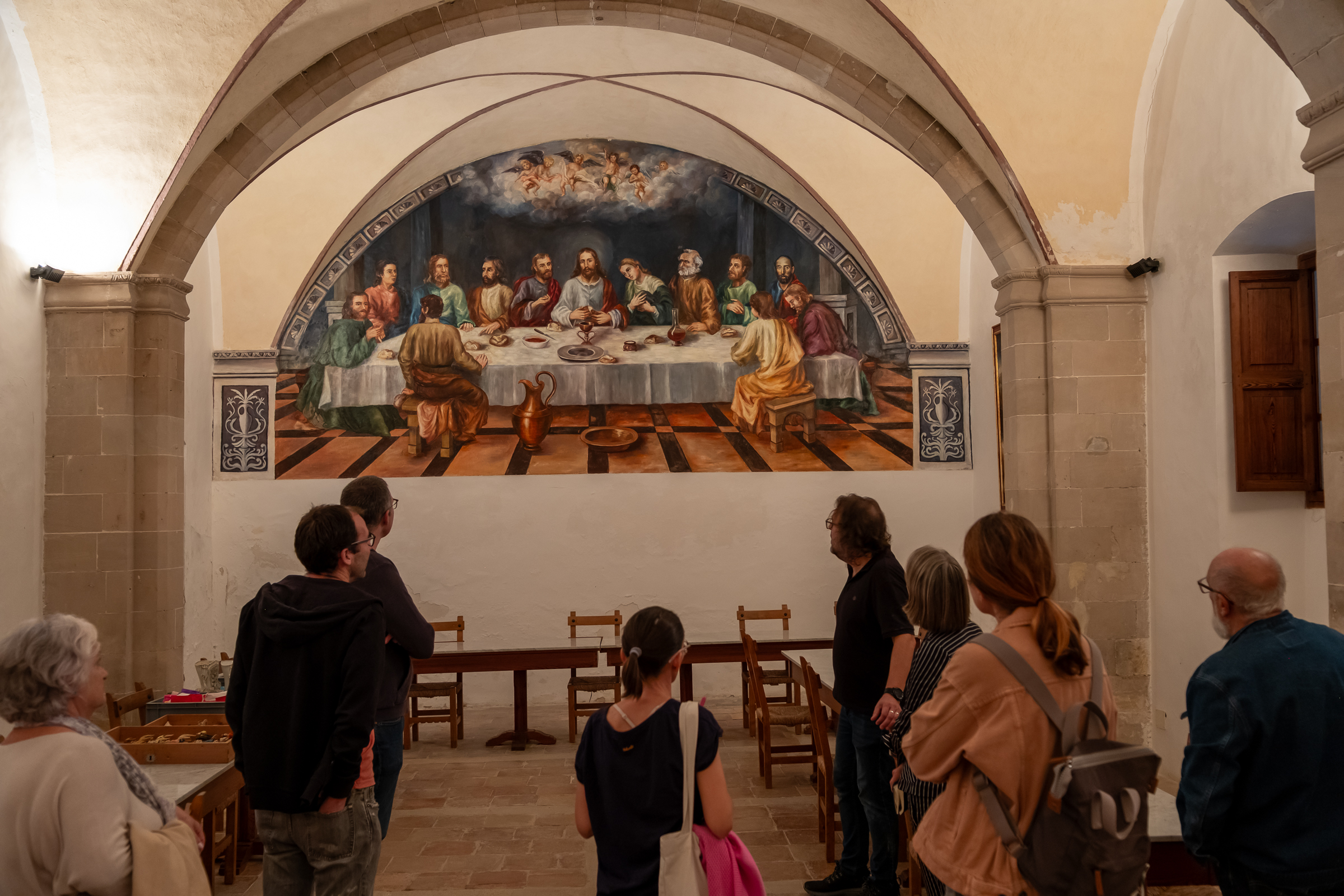
Guided Tours
For those curious to hear these stories firsthand, guided tours are held every second Saturday of the month. Don’t expect velvet ropes and souvenir shops. Expect silence, depth, and the kind of insight that makes history feel alive again. ![]()
Read more about castles on Mallorca, here.
Convent Concepcionista Palau de Sineu
Carrer del Palau
07510 Sineu
website

